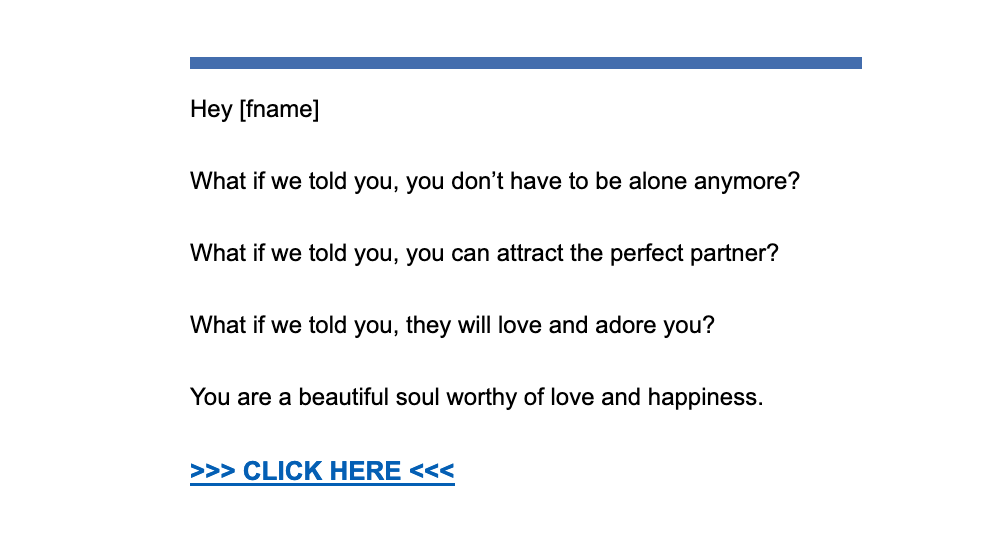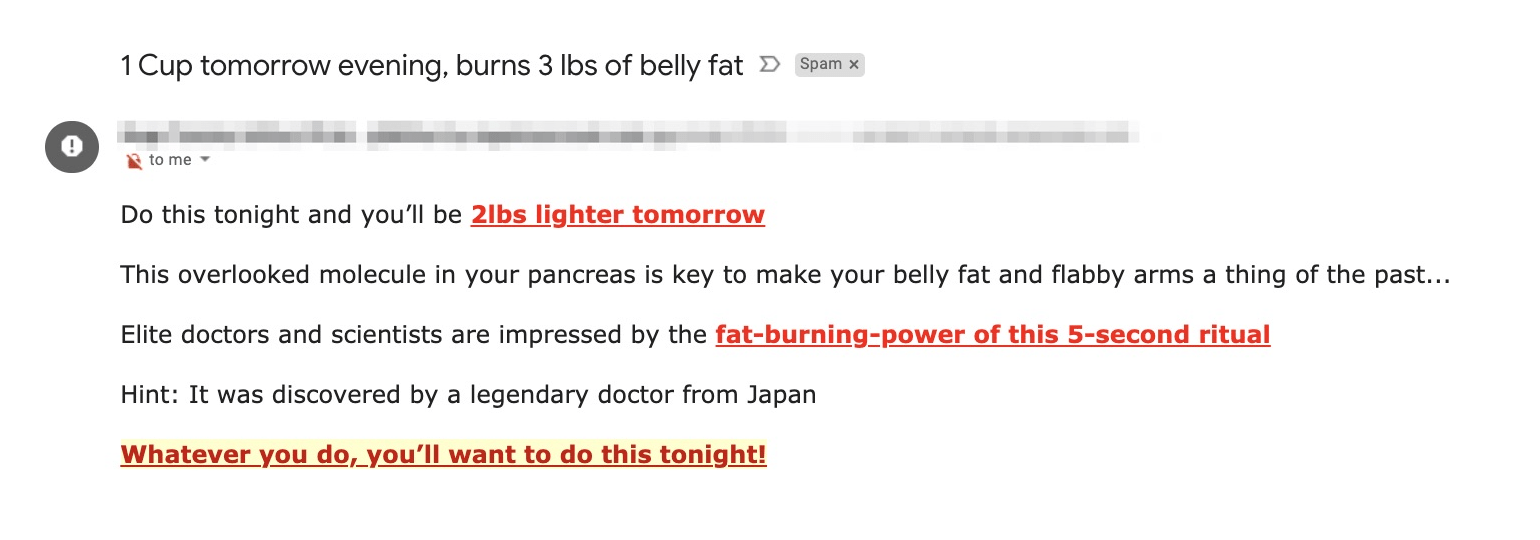Email Deliverability: How to Maximize Your Message's Reach and Impact
 Amy Elliott
Amy Elliott

Email marketing is one of the most valuable marketing channels, with returns on investment (ROI) as high as $36 for every dollar spent. But even with awesome content, a snazzy design, irresistible offers, and a sizeable email list, your campaigns won’t be effective if they aren’t reaching inboxes. That’s why it’s also important to place a high priority on checking and improving email deliverability.
In this article, we’ll go through what you can do to check your email deliverability and some best practices to improve it. Stick with us to learn how to avoid that scary spam folder and get your messages delivered directly to subscribers’ inboxes. 💪
What is email delivery vs. email deliverability?
Email deliverability rate refers to your ability to reach the inbox of your recipients. It’s also known as the inbox placement rate—the percentage of emails that successfully land in the inbox.
This shouldn’t be confused with email delivery rate—they’re two entirely different things! Email delivery rate is simply the percentage of emails received by the servers of your subscribers’ email providers—including those that land in the spam or junk folder.
So let’s take a look at how you can check and improve your email deliverability!
How to check your email deliverability
1. Analyzing open rates
Your email open rates can be the first indicator that your deliverability is suffering. Depending on your niche, what appears to be a low open rate might actually be the norm, so it’s a good idea to compare your results with current email marketing benchmarks.
To calculate open rate for a campaign, divide the number of unique opens by the number of emails sent (not including email bounces).
If you find that your average open rate is below industry standards, it could mean that your emails aren’t hitting inboxes, and it’s time to delve further into your deliverability.
2. Sending a tester email to yourself
This is a quick, free way to see how your new email campaign looks in the inbox. But be warned—this isn’t 100% reliable, because an email that lands in your inbox might also land in someone else’s spam folder.
3. Using an email deliverability testing tool
There are lots of email testing tools out there that will scan your emails for spammy content, HTML errors, and check for email authentication and a return path for bounced messages.
4. Checking the design and responsiveness
The way your subscribers interact with your email can also be an influencing factor. You can improve email deliverability by testing for things like mobile responsiveness, and how the email looks in dark mode.
5. Inbox placement
An inbox placement tool will analyze the percentage of your emails that reach the inbox or go to the spam folder. Some will even test how your emails will perform with different mailbox providers!
It’s always better to be sure before you hit ‘Send’, so when in doubt, test, test and test some more! And use a deliverability tool for that professional validation.
How to improve your deliverability
If you’re finding deliverability to be a hit-and-miss affair, not to worry. The key point is to make sure that you are delivering useful and timely emails to subscribers that have opted-in to your list. Here are some things you can do to pre-empt email deliverability issues.
1. Email authentication
When sending emails, how do people know that you are who you claim to be?
ISPs, like Gmail or Outlook, use email authentication protocols to verify a sender’s identity and catch fake senders. These protocols include SPF (Sender Policy Framework), Sender ID, DKIM (DomainKeys Identified Mail), and DMARC (Domain-based Message Authentication, Reporting & Conformance), which are placed as DNS (Domain Name Server) records for your domain.
These tools look beyond the surface and match IP addresses to verify whether the sender’s email address relates to the actual sending domain.
Thankfully, you only have to authenticate your domain once with an email service provider (ESP) like MailerLite or MailerSend. This tells the servers of the world that the email address you’re using to send emails is really yours. Thus, your email is less likely to bounce or end up in the spam or junk folders.
2. Avoid spam filters
As gatekeepers, ISPs constantly monitor and filter questionable, spammy and phishing emails for their customers. This means your emails need to be designed and written with an emphasis on quality to get into their good books.
Spam filters, like SpamAssassin, look at a variety of things in your email content to decide whether it’s a genuine email that the subscriber wants to receive—or something that’s a nuisance. Hence, it’s important to write and design your emails with the following in mind:
Don’t use devious links or hide them with link shorteners
Avoid “salesy” CTAs like CLICK HERE and use of special characters

Don’t go overboard with exclamation points or ALL CAPS

Don’t highlight words in red. Other colors are fine, but spammers somehow made the color ‘red’ a red flag

Don’t have one big image as the email content. Add ALT text and short descriptions to images

Remember to include an unsubscribe link. Not having a way for subscribers to leave is generally a sure-fire way of identifying spam. After all, you’re legally obligated to allow recipients to unsubscribe or opt-out from future mailings
MailerCheck’s Email Insights tool scans your email content for deliverability red flags such as spammy words, broken links and problematic code so you don’t have to.
3. Separate the inactive from active subscribers
Want to increase your email engagement rates? Practice subscriber segmentation based on activity and create targeted, personalized campaigns to offer more valuable content. Active subscribers may be happy as they are, while inactive subscribers can be encouraged to interact using a win-back email campaign.
If people aren’t interacting with your emails, it’s probably best to reduce the number of emails sent to them—or remove them altogether from your email list. This list pruning should be done regularly as part of your email list cleaning and scrubbing routine.
4. Use a sender address that is real and recognizable
This benefits both readers and spam filters who use the sender address to check who you are.
Use your real name or a consistent brand name in all your marketing emails. Let people reply to an existing email address from a verified and authenticated domain, such as [email protected]. Business emails tend to have better deliverability because of this.
5. Protect your sender reputation
Behind the scenes, your sender reputation is assigned a score by Internet Service Providers (ISPs) based on various factors. These include the quality of your email campaigns, their frequency, number of subscribers, and subscriber interaction.
The higher the score, the better your email domain reputation. Conversely, a low or negative sender reputation means that your emails are likely to go straight to the spam or junk folders—or not get delivered at all.
As an email marketer, you want to befriend ISPs. It takes a long time to build a good email reputation, and it can be destroyed easily. Just like a real-life credit score. A good reputation means you’re sending emails to people that opted in and want to read your newsletters.
There are many factors that ISPs look at to assess your email sending practices. To stay on the right side of ISPs you should:
Monitor blocklist activity
Email blocklists are your worst enemy. These lists contain domains, servers, and IP addresses of email senders that were caught sending spam. At your first foul, you can still get off the list pretty easily. The more it happens, the more you need to start preparing for a junk folder future. That is if your email gets delivered at all!
To learn more about how to check for blocklist activity and get removed from them, check out our guide to getting delisted.
Use double opt-in
Having subscribers double opt-in to your email list involves them confirming their subscription after the initial sign up. This is usually done via a subscription verification email. Double opt-in ensures that subscribers did indeed intend to sign up to your list and that they want to receive your content. It’s also a good way to weed out any bots!
Follow the relevant spam laws
There are a number of laws and regulations in place to protect consumers from unlawful email activity. These include CAN-SPAM and GDPR. While they might seem like a pain for businesses, following them will also protect you from unhappy subscribers and increased spam complaints.
Make sure you’re fully versed in the regulations applicable to your subscribers and follow them in your email marketing. This extends outside the scope of just your campaigns, to how you collect subscribers, how you communicate with them, and how you process their data.
Other ways you can avoid spam complaints include:
Never using purchased lists—don’t even think about it!
Let subscribers know what to expect before signing up—be completely honest!
Keep up with email list hygiene
Which brings us to…
Clean your email list
Regularly cleaning your subscriber list is a must for improving email deliverability. Even better, using an API to verify subscribers automatically as they sign up is the best way to keep your list in tip-top condition.
Spam traps are bad news. It shows you’re tied up in sketchy practices or didn’t scrub your subscriber list properly. Both spam traps and bounces can be filtered out by regularly cleaning up your list with a tool like MailerCheck.
You want a list of subscribers that have opted-in to your emails for the worthwhile content that you’re offering. Ideally, your list should have all of the following characteristics:
Happy readers
Little to no spam complaints
Low bounce rate
No spam traps in your list
No blacklist mentions
Regular, consistent sending of email campaigns
Happy readers also reward your emails with high open rates. Good engagement metrics mean people enjoy the content you send out.
Develop a consistent email cadence
Start by sending small batches of emails to engaged users and build up your sending activity gradually. Then try to send your email campaigns consistently and evenly distributed. Of course, there will be times that your email volume will spike (due to holidays or sale seasons), but try to settle into an email cadence that’s ideal for you.
6. Use dedicated email infrastructure
What you may not know is that ESPs use shared IP pools for all their users. This means that all senders with the same IP contribute to the email deliverability score. For most senders, this is beneficial, as they can profit from other people’s reputations (and need to worry less about consistent sending and regular list cleaning).
However, if you’re a high-volume sender and want to be in total control, it’s best to use a dedicated IP address. This means your IP reputation belongs to you and you alone. These IPs are perfect for senders who email corporate domains that are required to whitelist your IP before sending them emails regularly.
When you get your shiny new IP address, it can be tempting to start sending bulk emails straight away. Avoid this mistake! You first need to establish your reputation with major ISPs to prove that you are a responsible sender: Warm up your IP address by gradually increasing the sending volume over several weeks.
7. Optimize your content for deliverability
Meet your subscribers’ needs with relevant content and you’re on the way to creating successful email marketing campaigns. Here are ways you can optimize your content for deliverability:
Serve content that is valuable for your readers. Think: Does this really help my audience?
Be consistent in your design so that people can recognize your brand
Make your emails readable on desktop, tablet, and mobile devices. Most ESPs automatically make your email template responsive
“Do-not-reply” email addresses are a thing of the past and negatively affect deliverability. Email marketing is about growing relationships and subscribers should be able to get in touch with you whenever they want
Add an unsubscribe link in the email footer, so people can easily opt-out. Let’s face it: an unsubscribe is 100 times better than someone marking your email as spam
Don’t trick people! Align the subject line with the email content and don’t hide dodgy links using link shorteners.
Additional aspects that improve email deliverability
While we’ve gone into detail about everything you can do or avoid as a sender, there are also a few subscriber traits and behaviors you can aim for in order to improve your deliverability further. These are all down to the subscriber. But by following these email deliverability best practices, you can encourage these actions with a clean email list and by creating great content with the following goals in mind:
Good engagement metrics—open and click rates
Starred or marked as favorite
Email replies
Email forwards
Added you to the address book
All of these actions signal to ISPs that your emails are important, wanted and valuable. You can increase this behavior by making your emails more engaging, for example, with interactive content such as surveys or by asking questions. You can even directly ask your subscribers to add you to their address book in your welcome email or confirmation email.
Email deliverability isn’t hard when you put your subscribers first
Improving email deliverability is a complex topic, but if you keep your subscribers in mind and follow these best practices, you’ll enjoy healthy inbox delivery time and time again.
Set up your email authentication protocols, create high-quality email content that subscribers love to engage with, and stay far away from blacklists and spam filters. Cleaning up your list regularly with an email verification tool will maximize your email deliverability. And don’t forget to run your campaigns through a deliverability testing tool!
Have any questions about email deliverability? Fire away in the comments!
Time to check your email deliverability?
MailerCheck is the all-in-one email verification and deliverability tool that helps businesses clean their subscriber lists and optimize emails for maximum deliverability.
Editor’s note: This post was originally published in January 2021. We've now updated it with new tips and best practices.


